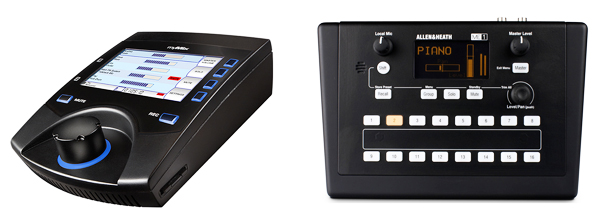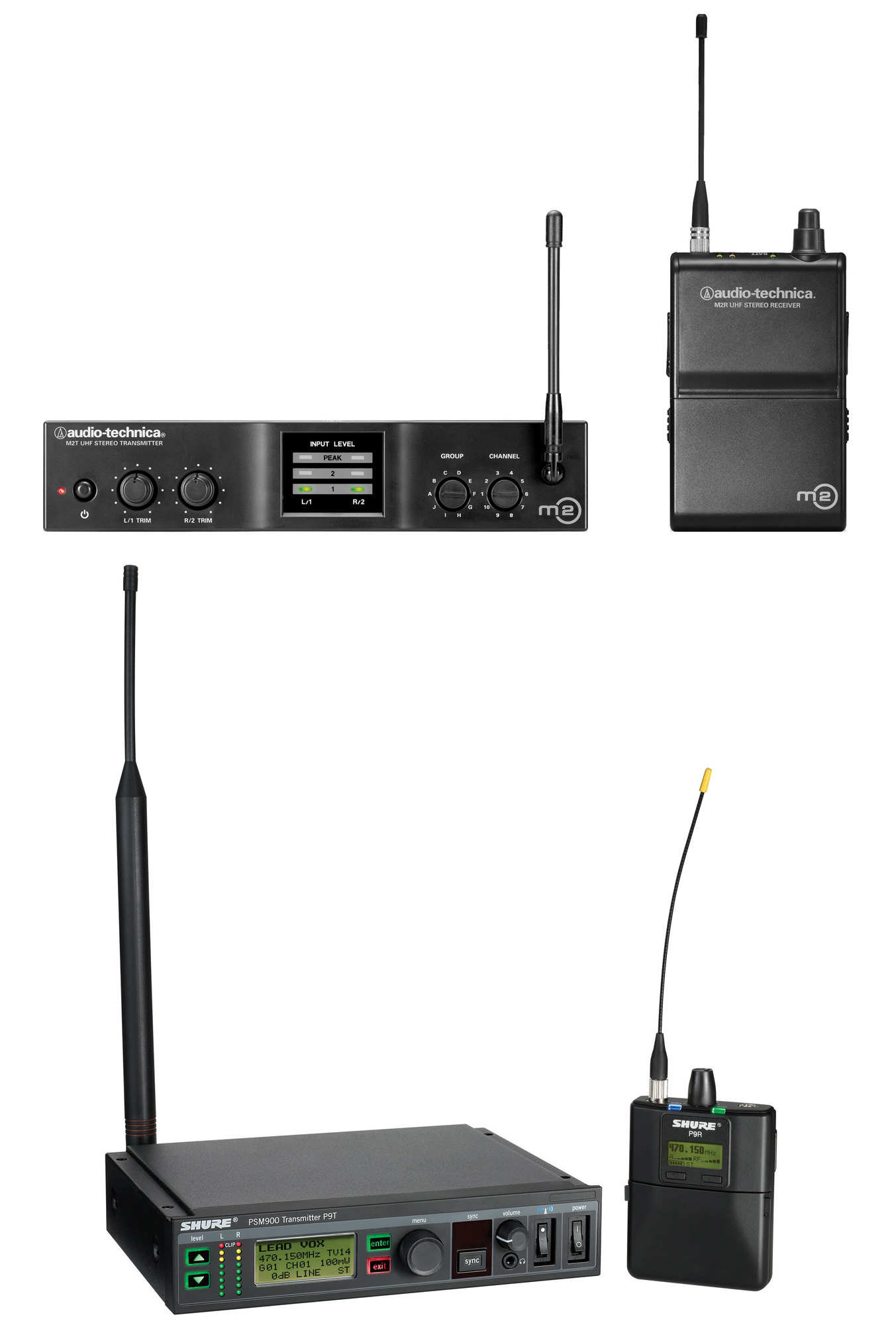
Making It Personal
Going beyond a handful of different mixes provided by the monitor engineer, compact monitor mixers can be positioned by the individual musicians who can then customize their own mixes.
Professional personal mixers allow musicians to select and custom-mix 16 channels or more (discrete channels or sub-mixes) of digital audio from all available channels, adjust levels, pan, EQ and effects for each channel, plus save and recall presets of previous mixes.
Aviom is a pioneer in personal mixing, and recently introduced the A360, offering 16 mono or stereo channels that can be selected from a 64-channel A-Net or Dante digital audio network, plus an additional dual profile channel that gives the musician instant access to a most important channel of their choice. The system also has an onboard mic that can be enabled for one-touch ambience, or a stereo ambience feed from the console can be tied to this control.
The Roland Systems Group M-48 provides access to either 16 or 40 channels of digital audio when the appropriate Roland digital snake is connected to a Roland V-Mixer console. The setup of connected M-48s can be controlled locally or via software on a control computer. The personal mixer offers multiple outputs to feed a pair of floor wedges as well as headphones or IEMs.
The Allen & Heath ME-1 personal mixer works seamlessly with the company’s iLive and GLD digital mixers, complemented by the ME-U hub that opens it up to use with other consoles via Dante, EtherSound or MADI. ME-1 also has an Aviom compatibility mode.
The dbx professional PMC16 personal monitor controller can be used with the dbx TR1616 converter or any other Harman BLU link compatible device, and multiple PMC16s can be daisy chained using Cat-5e, allowing each user to receive 16 channels. It also is outfitted with onboard Lexicon reverb. The Movek myMix system has a powerful yet simple interface that includes a large backlit screen, rotary controller, and four function push buttons, allowing the user to select and control a 16-channel mix.
And another step farther, Pivitec and PreSonus combine hardware with configuration and control software running on tablet PCs and smart phones. The Pivitec system is based on AVB Ethernet protocols, using compatible network routers and switches plus 16-channel rack-mountable input modules.
PreSonus offers an app called QMix to provide up to 10 musicians with individual wireless mixes on their iPhone or iPod Touch, when used in conjunction with the company’s StudioLive console. The iOS device will detect all StudioLive mixers on the network, and can create a mix that includes all mixer channels. Aviom has also announced that iOS support for the A360 is coming this year.
Going Wireless
Today’s performer may be wearing at least two wireless packs – one to transmit voice or instrument to the console, and one to receive a personalized stereo mix. Being wireless provides freedom of movement while retaining a clean, consistent monitor mix. Several wireless microphone manufacturers also offer wireless IEM systems, including Shure, Sennheiser, Audio-Technica, Lectrosonics and others.
Shure offers the PSM900 single-channel and PSM1000 dual-channel wireless personal monitoring systems, which operate in the UHF band. They are analog systems with a frequency response of 35 Hz to 15 kHz, with a stereo separation of 60 dB. The PSM900 covers 36 MHz of spectrum, and up to 20 compatible frequencies can be used together. Transmitter power is selectable at three levels – 10, 50, and 100 mW. The slim bodypack is ruggedly constructed with a metal chassis, and has a detachable whip antenna, stereo mini jack, and a rotary level control.
Audio-Technica offers the M2 single-channel wireless monitoring system operating in the UHF band over 33 MHz of spectrum, with multiple bands available. Up to 10 systems can operate together per band. In addition to L/R inputs, an additional input for a click track or ambient mic is provided.
Meanwhile, Sennheiser SR 2000 single-channel and SR 2500 dual-channel wireless IEMs also operate in the UHF band, with the system spanning a 75 MHz band. The transmitter has a 5-band graphic equalizer that can be accessed via the menu.
Note that as the term “wireless” makes clear, these systems use RF spectrum, so these systems need to be coordinated along with wireless mic, instrument, and intercom systems at every show.
Quality in-ear monitors are available at many price points, ranging from a couple hundred to a couple thousand dollars. Hearing a consistent mix is certainly easier when using them, and at less damaging levels. There are benefits to be had in isolation, comfort, and sound quality with some of the custom units. For performers who want to instantly adjust their mix during the performance, the technology is available.
With all the movement on stage, many choices of reliable wireless delivery are available, and to my ears sound as good as wired. In the end, it all boils down to meeting the needs and preferences of the musicians for quality monitoring.
Gary Parks is a pro audio writer who has worked in the industry for more than 25 years, including serving as marketing manager and wireless product manager for Clear-Com, handling RF planning software sales with EDX Wireless, and managing loudspeaker and wireless product management at Electro-Voice.


